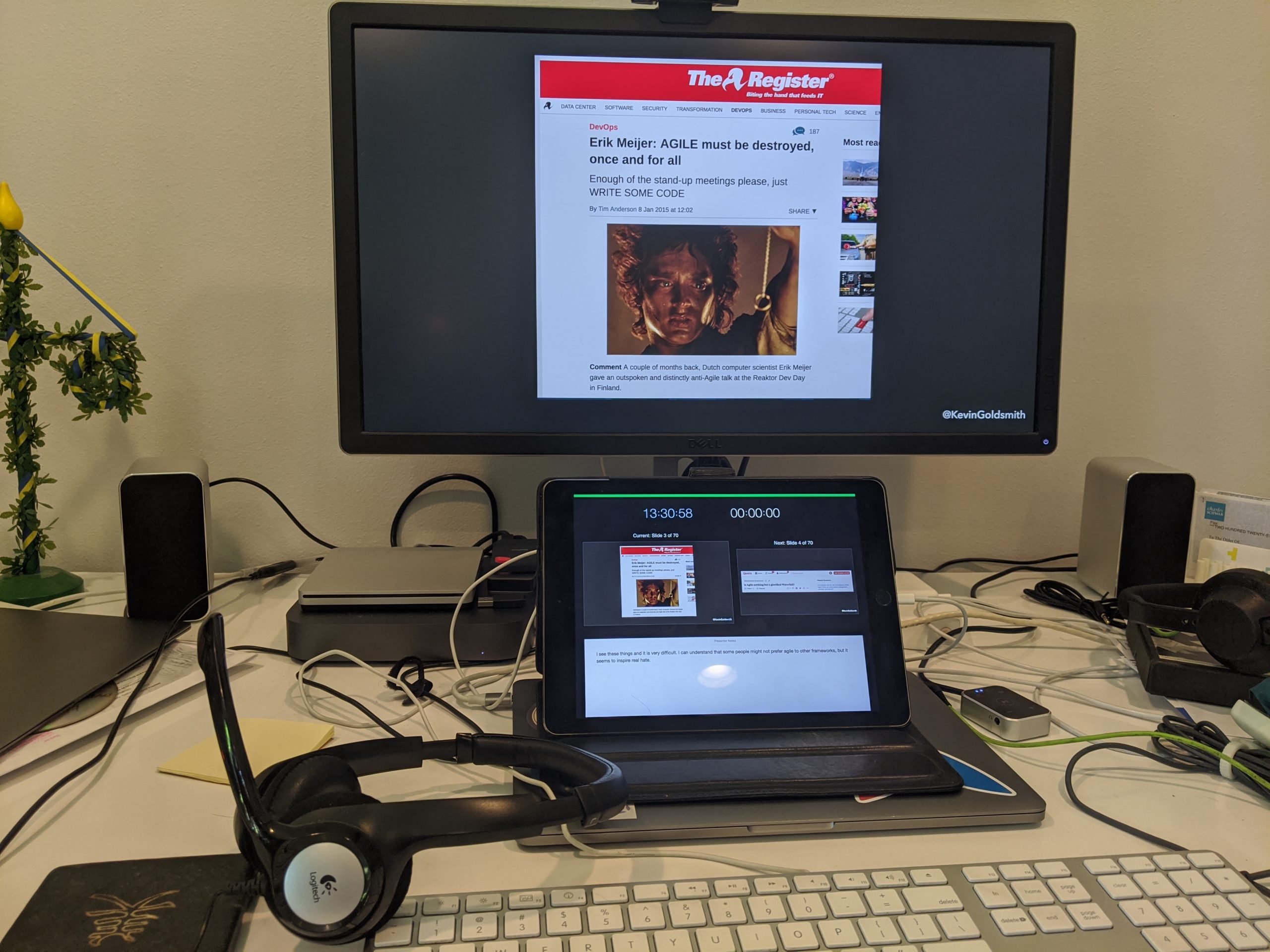While I am an experienced video-conferencer and a reasonably experienced presenter, presenting to a remote audience is still something I am learning how to do. Having just given a talk this morning, I did want to share some things that are working well for me at the moment.
The Tools
Today I presented from my Mac Mini, and so used a separate webcam. The important thing here is that it was placed above my eye-line and not below. This is a lot more flattering of a view (i.e., not up your nose). If you are presenting from your laptop, raise it so that you get a similar angle.
I only have a single screen, so in presentation mode, I would lose my presenter view. Personally, I heavily rely on the presenter’s view. So I used my iPad with Duet to have a second screen. I use keynote primarily. I’ve noticed that Google Slides doesn’t work well with this setup.
You see my headset mic. Obviously, for a presentation to a group, you want the highest quality audio, an inexpensive headset mic works well. I prefer this over the iPhone style headphones (corded or cordless). The sound is better. If you use a wireless mic, make sure it is fully charged before you begin. At some point, I may switch to a podcaster desk mic, as the headset isn’t that flattering.
What is missing here is a good light. I have a big window to my left and a smaller one in front of me, so I get some natural light. However, most of my lighting does come from ceiling lights, which is not the most flattering on video. I ordered a you-tuber-style ring-light, but it is taking a very long time to arrive. I’ll need to find the optimal place for that light so that it isn’t casting weird shadows on my face.
Presentation Style
If you see me speak in person, you will know that I have a tendency to walk around on the stage and use my hands.
When presenting from a desk, I “bring in” my movements a bit so that they don’t go beyond the video frame. I watch myself out of the corner of my eye to know the edges as I am talking.
I have sometimes used a standing desk configuration to be a bit more natural. Still, given the constraints of standing in one place when speaking versus sitting, I think I prefer sitting.
You need to be more effusive, more visible when presenting with slides through a video conferencing system. You will be seen in a small video window in the corner, so you want to be more than a “talking head.”
The Environment
Before I talk, I will usually check what the background behind me looks like using zoom or Photobooth on the mac. That gives me an idea of what is visible behind me when I am talking. I generally try to clean up, so that there isn’t a mess for people to focus on. I will sometimes add a few small things of visual interest in the background, though. I think that is more humanizing and also gives some easter eggs for the audience.
Be careful when previewing what you think the audience will be able to see in your environment. On multiple occasions, I have cleaned up to the edges of what I saw as the video frame. Only to find that zoom had been showing me a cropped view of what everyone else could see. Quite embarrassing to watch a recording and see a pile of stuff on your floor that you didn’t realize other people could see.
Substance Over Style
In the end, everything above is about polish, not content. If you have something novel, something interesting, to say, that is the most critical thing. If you have a limited time to prepare, focus on making sure that what you present will be useful and informative to your audience. Rehearse your talk so that you feel comfortable presenting it and can smoother over any hiccups with technology or literal hiccups.
If your content is right and you are comfortable presenting it, your audience will remember it as a good talk. Then you can focus on cleaning up that pile of t-shirts in the corner of your room or make sure that you don’t look like a vampire because of the lighting.
If you are upping your remote presentation game, I’d love to hear your tips in the comments.

